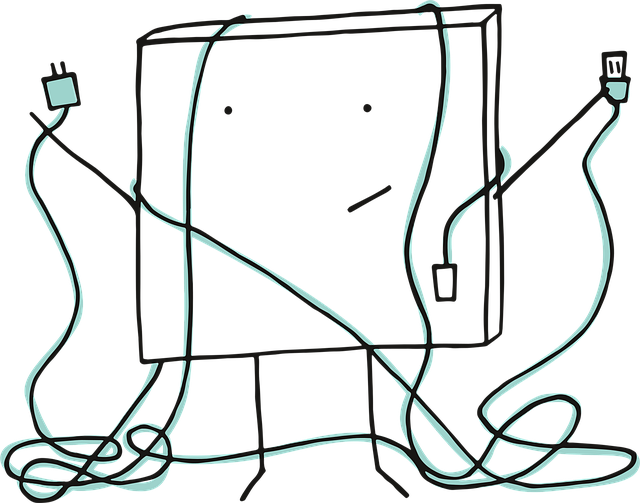Master On-Site Technical SEO Fundamentals for Enhanced Search Visibility

Technical SEO optimizes website structure, speed, and accessibility to improve search engine ranking…….
In the dynamic world of digital marketing, where search engine optimization (SEO) plays a pivotal role in driving online success, a specialized subset has emerged—Technical SEO. This intricate field focuses on the technical aspects of websites and search engine interactions, ensuring that sites are optimized not just for users but also for search engines like Google, Bing, and Yahoo. Technical SEO is the unsung hero behind many top-ranking websites, influencing their visibility, click-through rates, and overall online performance. This article aims to provide an extensive guide to understanding, implementing, and staying ahead in the realm of Technical SEO.
Definition: Technical SEO refers to the practice of optimizing a website’s technical elements to enhance its accessibility, indexability, and overall search performance. It involves ensuring that search engine crawlers can efficiently explore, understand, and interpret a website’s content, resulting in better rankings and increased visibility in organic search results.
Core Components:
Site Architecture and Structure: A well-organized site architecture is fundamental. This includes creating a clear hierarchy through URL structures, using breadcrumb trails, and implementing an XML sitemap to guide search engines through the website’s content.
Crawlability and Indexability: Search engine crawlers need to be able to access every page of a website. Techniques such as ensuring proper robot.txt file setup, using canonical tags to avoid duplicate content issues, and fixing broken links enhance crawlability. Indexability ensures that search engines can understand the content of each page, requiring properly formatted meta tags, header tags (H1-H6), and structured data markup.
Page Speed Optimization: Faster loading pages improve user experience and are favored by search engines. Optimizations include leveraging browser caching, image compression, minification of code, and utilizing content delivery networks (CDNs).
Mobile-Friendliness: With the majority of internet traffic coming from mobile devices, Google’s Mobile-First Indexing means mobile optimization is crucial. Responsive design, accelerated mobile pages (AMP), and ensuring a seamless user experience on smaller screens are essential.
Security (HTTPS): Implementing secure connections through HTTPS encryption protects user data and enhances site credibility. Search engines prioritize secure websites, and it also signals trust to potential visitors.
Historical Context: Technical SEO’s importance has grown significantly with the advancement of search engine algorithms. Early search engines struggled to understand complex websites, leading to issues like the “link farm” phenomenon. As search engines evolved, they began focusing on site architecture, content quality, and user experience—all aspects that fall under Technical SEO’s scope.
Technical SEO is a global endeavor, with websites operating in diverse markets facing unique challenges and opportunities. Here’s an overview:
| Region | Trends/Challenges | Best Practices |
|---|---|---|
| North America | Compliance with strict data privacy laws (e.g., GDPR, CCPA) and ensuring mobile-friendliness across a diverse range of devices. | Implementing robust privacy policies, utilizing reCAPTCHA for captchas, and conducting extensive user testing for responsiveness. |
| Europe | Adapting to multiple language versions while maintaining SEO efficiency. | Utilizing server-side rendering (SSR) for dynamic content, implementing hreflang tags, and employing localized keyword research. |
| Asia Pacific | Dealing with diverse character sets and languages, particularly in China and Japan. | Optimizing for specific search engines like Baidu and Yahoo Japan, utilizing multilingual content strategies, and understanding local cultural nuances. |
| Latin America | Overcoming limited internet infrastructure and promoting mobile-first strategies. | Focusing on contextual and localized content, leveraging social media for discovery, and optimizing for voice search. |
Regional trends often shape Technical SEO strategies, reflecting the unique needs of each market. For instance, the rise of mobile-first indexing globally has led to a more responsive web development approach worldwide.
Market Dynamics: Technical SEO plays a significant role in shaping online business landscapes. Effective implementation can lead to increased organic traffic, improved user engagement, and higher conversion rates, all contributing to enhanced revenue and market share.
Investment Patterns: Companies investing in Technical SEO often see substantial returns. According to a study by Search Engine Journal (2021), businesses that focused on site speed optimization experienced a 104% increase in organic sessions, highlighting the economic impact of technical optimizations.
Cost-Benefit Analysis: While initial investment in Technical SEO may be significant, particularly for complex site overhauls, the long-term benefits are substantial. Well-optimized sites can attract and retain users more efficiently, reducing marketing costs associated with paid advertising.
Technical SEO has been significantly influenced by technological breakthroughs:
Artificial Intelligence (AI) and Machine Learning: AI algorithms power many modern search engine features, from natural language processing to personalized search results. Technical SEO practitioners must stay abreast of these advancements to optimize content effectively.
Voice Search and Smart Assistants: The rise of voice search has led to a focus on conversational language optimization and implementing structured data for rich snippets. Smart assistants like Siri and Alexa have also influenced the way users interact with search engines.
Progressive Web Apps (PWAs): PWAs offer an app-like experience within a web browser, providing faster load times and enhanced offline functionality. They are optimized for discoverability and engagement, benefiting from Technical SEO best practices.
Server-Side Rendering (SSR) and Static Site Generation: These technologies improve page loading speeds and search engine visibility by rendering content on the server side, enhancing the overall user experience.
Implementing Technical SEO effectively begins with mastering these fundamental techniques:
Site Audit: Conduct regular site audits to identify issues like broken links, duplicate content, or mobile usability problems. Tools like Screaming Frog, Ahrefs, and Google Search Console can assist in this process.
Keyword Research: Utilize keyword research tools (e.g., Google Keyword Planner, SEMrush) to discover relevant keywords for each page, ensuring optimal content targeting.
On-Page Optimization: Optimize title tags, meta descriptions, header tags, and URLs to align with target keywords while maintaining readability and relevance.
Structured Data Markup: Implement structured data (Schema.org markup) to provide search engines with structured information about your content, enhancing rich snippet opportunities.
Mobile Optimization: Ensure responsive design, fast loading times, and a seamless user experience on mobile devices through comprehensive testing.
For those looking to stay ahead in Technical SEO, consider these advanced strategies:
Implementing Accelerated Mobile Pages (AMP): AMP offers lightweight, fast-loading pages for mobile users while providing an easy way to share content with a unique URL structure.
Server-Side Rendering (SSR) for Dynamic Content: SSR ensures that search engines can index dynamic web pages, improving visibility for sites relying heavily on JavaScript frameworks.
Utilizing Interstitials Strategically: While pop-ups should be used sparingly, interstitials (e.g., for ad blocking users) can be optimized to improve user experience and SEO when implemented correctly.
Content Delivery Networks (CDNs): CDNs distribute content across multiple servers worldwide, reducing latency and enhancing page speed for global audiences.
Technical SEO is an ever-changing field due to the continuous evolution of search engine algorithms and technological advancements. To stay ahead:
Follow Industry Blogs: Keep up with industry leaders like Search Engine Journal, Moz, and SEMrush for the latest news and trends.
Engage in Communities: Participate in SEO forums (e.g., Reddit’s r/SEO) to exchange ideas and learn from peers.
Attend Conferences: Events like SMX, ClickZ, and Google’s Search Central offer valuable insights and networking opportunities.
Continuous Learning: Invest time in online courses and certifications to enhance your skills and stay current with best practices.
Technical SEO is the backbone of a successful online strategy, ensuring that your website performs optimally in search engine results pages (SERPs). By understanding and implementing the techniques outlined in this article, you can improve your site’s accessibility, visibility, and overall user experience. Remember, Technical SEO is an ongoing process, and staying informed about industry developments will empower you to adapt and thrive in the digital marketplace.

Technical SEO optimizes website structure, speed, and accessibility to improve search engine ranking…….

Image and Video SEO are Technical SEO components that increase online visibility and user engagement…….

Technical SEO is crucial for online success, focusing on backend optimization to enhance search engi…….

The Robots.txt file is a crucial tool for Technical SEO, guiding search engine crawlers on website a…….

A Technical SEO audit identifies and rectifies website issues that hinder search engine visibility a…….

A well-structured site architecture optimizes websites for search engines, enhances user experience,…….

Technical SEO optimizes website crawl efficiency, enhancing search engine discovery and indexing. Ke…….

XML sitemaps are essential for Technical SEO, guiding search engine crawling and indexing by providi…….

Core Web Vitals are crucial metrics for website performance and user experience, directly impacting…….

Code errors hinder performance and user experience, impacting Technical SEO. Identifying root causes…….